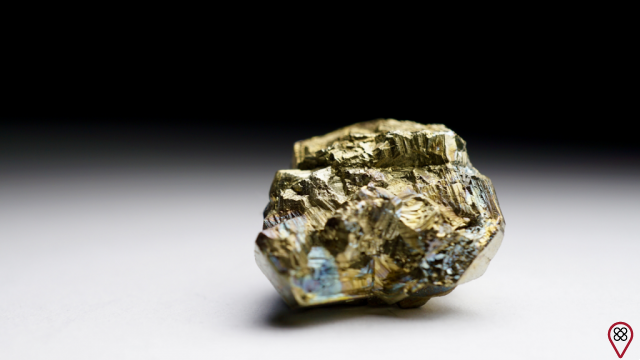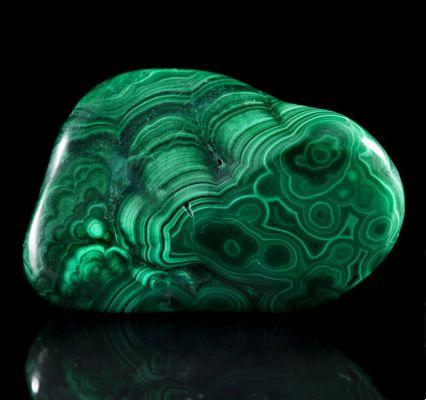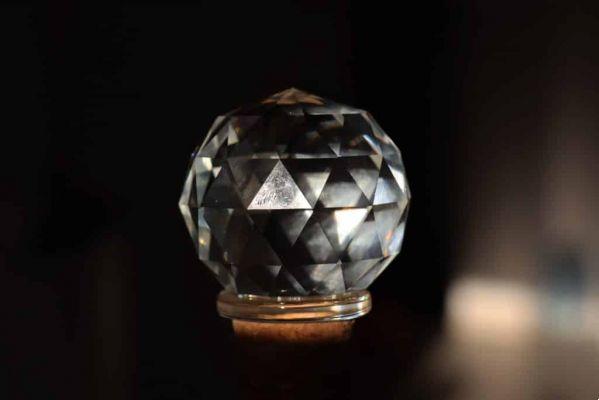In addition to the physical and simple hygiene that we know, our body needs to clean itself internally, that is, our spirit and mind always need to undergo recycling. And some Yoga purification processes can provide this.
They are: kapálabháti, traka, nauli, neti, dhauti and vasti.
1 – KAPÁLABHÁTI
The name means "shining skull". In kapálabhati we send an extra charge of oxygen to the brain, causing a sensation of brightness. The exercise in question provides total airway clearance.
Relax and get all the air out of your lungs. After that, inhale slowly and, without holding the air, exhale through the nostrils, making a lot of noise and noise and contracting the abdomen forcefully.
Breathe in completely, smoothly and release the air again with force, but without contracting the facial muscles or moving the shoulders. It is recommended that you do the exercise ten times;
2 – TRÁTAKA
You will need to sit in a meditation position, stretching your right arm in front of you with your hand closed and your thumb facing up. Fix your gaze on your thumbnail and move your arm slowly to the side, up and down, keeping your gaze on your finger, without moving your head. Do the same movement to the opposite side.
Now take your hand up, then go down the side and reaching the floor, switch arms, then go up the side and complete the circle, doing the opposite movement as well. Run several times, the movement should be slow. Remember that only the eyes follow the movement of the hand and the head remains unmoved.
Bring your thumb close to your eyes and focus on them closely, keeping your eyes fixed on them. Then focus on a point slightly away from you and quickly return your gaze to your thumb several times. Then fix your gaze on a closer object without blinking, until you feel your eyes water.
Finally, bring your palms together until you feel that you are producing heat. Cover your eyes with your palms, lightly but firmly fix it so that no light enters the eyes and allow the eyeballs to assimilate heat.
3 – FARE
Inhale deeply, exhale all the air and contract the abdominal wall up and back, thus forcing the abdominal muscles to project forward. Lean on the strength of the trunk and transfer it to the right arm, not forgetting to keep the abdomen contracted. Then change the support side to the left. Then press on both sides, forcing the muscle forward. Do it over and over until you can effectively isolate it.
Then exhale and contract the abdomen, in order to fix the movement, in an undulating movement and turning the rectum to both sides: first do it clockwise, shifting and moving the rectum to the right side, then to the center and to the left , causing strong massage in Organs internal organs. Repeat the movement as many times as you can, always keeping your lungs empty and breathing in order.
4 – NETI
Neti kriya is an activity for purifying and cleaning the nasal mucosa, subdivided into:
- jala neti, made with water,
- neti sutra, which is made using a cord,
- dugdha neti, with milk,
- ghrita neti, in which ghee, clarified (Indian) butter is used.
Neti kriya cleans the nostrils, eliminates excess mucus accumulated in the nasal and frontal sinuses, stimulates the ajña chakra and develops clairvoyance, it is great against frontal and nasal sinus ailments, such as sinusitis, migraines, rhinitis, runny nose or colds and even favors the health of the brain, cervical and scapular regions. People who suffer from frequent nosebleeds should use room temperature water carefully.
Leg neti
Jala means water. Jala neti is the action of cleaning the nostrils performed with salt water.
To make this kriya, you will use a small-sized ceramic teapot, called a neti pot. It can be made with saline heated with mineral water, warm and salty to the extent of a tablespoon to a liter of water.
Stand with your torso slightly bent forward and slightly turn your head to the right. Place the beak of the neti pot in the left nostril and turn it over, allowing the water to enter through this pit and exit through the other. The passage of water must be calm and effortless. Keep your mouth slightly open and breathe through it calmly. After emptying the container, leave the torso in the same position and turn your face down now. Perform kapálabháti to extract the rest of the water. Then, following the same instructions, make the water flow from the left nasal cavity to the right.
Sutra network
Sutra means cord or thread. Nowadays the practice can be done with a thin probe, up to 4mm thick and 36cm long, lubricated with ghee.
Insert one of the probe tips into one of the nostrils. Gently and slowly push it until it reaches your throat. At this point, place the thumb and index finger of the other hand in your mouth, grab the end of the probe and pull it out very slowly and carefully. Now holding it by each end, move it up and down several times. After that, do the same process with the other nostril. Important: this exercise is reserved for experienced practitioners only. If you feel it might be difficult for you, go for jala neti, which uses only lightly salted water, ok?
To do the dugdha neti you will use warm milk instead of water and the procedure is the same as for jala neti.
O neti . grita It is done by passing ghee into the nostrils with the index finger slowly. This is widely used in India, as the air in the region is very dry and it is necessary to lubricate the nostrils to make it easier for the inhabitants to breathe.

5 – ANTAR DHAUTI
Antar literally means internal. It is a dhauti that are four techniques for the detoxification of Organs internal organs: vátasára, in which the air element is used; Várisára, where the water element is used; vahnisára or agnisára, the detoxification and cleansing done through the fire element and bahiskrita, the washing of the rectum.
It's on its way: This is a difficult method of execution, which is only recommended for practitioners who have acquired a good knowledge and mastery of their own body. Váta is air in Sanskrit. Vátasára dhauti kriya is purification of the stomach, performed using air.
The technique works as follows: slurping air through the mouth, through the crow's beak (kaki mudrá, gesture in which the practitioner must close the lips, leaving a circular opening for air to flow), until the entire stomach is filled. Circulate air through it and then perform an inversion position. The best of these is Sarvangasana, standing over the shoulders, with the knees bent and touching the forehead or the floor. In this way the air will be fully pressed, pushed into the intestines and expelled naturally. If any difficulties arise, it is possible to eliminate the air by staying in mayurasana. The Gheranda Samhita says that this dhauti purifies the body, prevents various diseases in the body and increases the secretion of gastric juice, facilitating the organism.
Várisa dhaut Vári means water. On an empty stomach, drink a liter and a half of warm, slightly salty water. Then do a few cycles of uddiyana bandha or nauli kriya rajas and one inversion. Finally, he expels the water through his mouth, placing two fingers down his throat to induce vomiting.
To Agnisa ou dhauti to vahnisara: This technique uses the fire element inside the practitioner's body, associated with the Váyu Samána, the air responsible for the correct assimilation of food. Agni means fire. The agnisara dhauti consists of performing exactly one hundred abdominal contractions in a single shunyaka (empty lung retention technique).
Sitting in a meditation position and resting your hands on your knees, let your torso lean forward a little. Eliminate all the air from the lungs, perform jalandhara bandha and forcefully contract the abdomen, as if you wanted to touch the navel through the spine. Then relax your muscles. Contract and relax several times quickly and intensely, while keeping your lungs empty. This dhauti increases willpower and bodily energy.
bahiskrita dhauti is the procedure of cleaning the rectum. This cleaning is carried out with water: stay submerged in water up to the level of the navel and wash the rectum with your fingers. You can also use air instead of water.
6 - VASTI
The vasti includes two methods for performing the purification of the intestines: one is done with water, called jala vasti and another with the use of air, called sthala vasti. In the case of the first exercise, you will only need time availability, as it will last approximately one to two hours, depending on the condition of the person's intestines. The second technique requires total mastery of the abdomen muscles by the practitioner.
Jala Vasti
Jala is water. Jala vasti is washing the intestines with water. The method requires a cannula or bamboo tube five fingers long and one finger thick. Brief history: In the old days, when the water sources were not polluted, the practitioners stayed inside a river, with the water at the level of the navel and used the bamboo to suck the water through it and make it penetrate and travel in the intestines. Then everything was thrown out. Mastering the technique, people were able to perform the technique without bamboo.
Nowadays, in the absence of clear rivers, the jala vasti can be performed with an enema that has a capacity of two liters of water. The water should be mineral, warm and salty, in the same proportion as used in jala neti.
Two liters of water are used through the rectum. It should be performed in an inversion position until you feel a strong urge to evacuate. The process must be continuous until the water is clear. Practicing jala vasti increases health, physical stamina and immunity. Don't worry about the loss of intestinal flora during washing, as it regenerates and renews quickly, thus being very beneficial. Drink curds or yogurt and it's okay.
Sthala Vasti
Standing in Viparíta Karanyásana, with your back at a 60 degree angle to the floor, place your knees to your chest, draw air through your rectum, causing emptiness in the abdomen through nauli kriya or uddiyana bandha. After a few minutes, until you can't stand it, he expels it by doing several abdominal contractions.
Text written by Bruno da Silva Melo from the Eu Sem Fronteiras Team

























